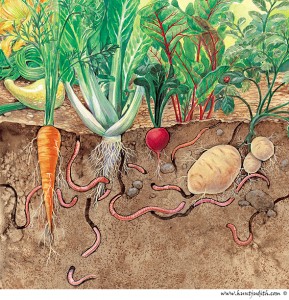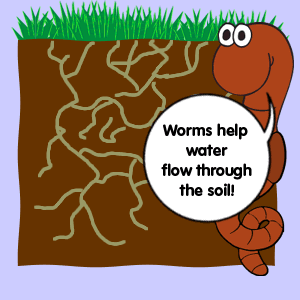See This Report about North Carolina Worms
Unknown Facts About North Carolina Worms
Table of ContentsNorth Carolina Worms Things To Know Before You Get ThisNorth Carolina Worms Things To Know Before You Get ThisExcitement About North Carolina WormsThe Best Guide To North Carolina Worms
Instance: 1-gallon of worm spreadings to 4 gallons of potting mix. 1/2 cup in the base of the planting hole for smaller sized plants. 1 cup for larger plants.
The enhancement of tea can likewise add increased microbial biomass to your dirt. You can always side-dress your plants with worm castings at any kind of time. Simply remember, the microbes will certainly die if revealed to UV rays (Sunlight), so be sure to cover the spreadings with an inch or two of soil.
This baffled them for many years until the testing approaches came to be better. They found that plant development and health and wellness exhibited a Bell Contour. It would improve(with even more castings), degree off, and after that decline. They were mystified. They ultimately discovered that excess plant-growth hormonal agents were the offender. A lot of worm castings would certainly accelerate the development to a pace that the plant might not recover from.
North Carolina Worms for Beginners
I have expounded the virtues of worm castings for concerning 2000 words. Worm castings are no different. It takes time to create quality worm castings.
Worm spreadings definitely cost even more than chemical plant foods. Worm spreadings are on the more affordable end of organic plant foods. (50 gallons per year) It is a much more challenging and extremely expensive financial investment to produce huge quantities of worm castings.

Creating a healthy and balanced soil might be the biggest advantage of worm castings. We reviewed worm castings NPK and additionally the appropriate nutrient analysis that must use to worm spreadings.
Unknown Facts About North Carolina Worms
We talked regarding some of the downsides linked with worm spreadings. I covered a whole lot of product in this write-up.
The vertical burrows are generally open, although the worms cap the top with residue and waste matter. Origins need oxygen for their growth, whereas they produce carbon dioxide that needs to leave the dirt.
Earthworms increase porosity by two systems: (1) by developing permanent burrows, and (2) by boosting soil gathering. Aggregation is boosted by the mixing of soil and organic issue in the earthworms' intestines. North Carolina Worms. These very steady aggregates are transferred by some earthworms in their burrows, and by others at the surface area of the soil


In one more research study, earthworms were approximated to eat 4 to 10 percent of the leading 6 inches of the dirt annually. Soil compaction decreases the porosity of the soil.
Some Known Factual Statements About North Carolina Worms
Normal earthworm populations can easily take in 2 lots of completely dry issue per acre annually, partially digesting and mixing it with dirt. The relevance of earthworms to blend surface residue with dirt comes to be extremely clear in soils that do not have any kind of earthworms. A lot of our Pennsylvania soils have at the very least some earthworms, and the impact of their complete absence, consequently, can not be kept in mind.
(https://www.nextbizthing.com/united-states/lenoir/home-20-garden/north-carolina-worms)In these dirts, the formation of topsoil with sensible raw material web content did not happen, resulting in poor crop growth. When the reason was developed, the federal government of the Netherlands began a campaign to introduce earthworms. After the introduction of the earthworms, a dark topsoil layer was formed, and plant development boosted considerably.
They live primarily from partly decayed natural matter that is currently incorporated in the soil. These species ingest huge quantities of dirt that they mix with digested plant deposit in their digestive tracts.
These varieties consume considerable quantities of dirt that they mix with absorbed deposit in their guts. Their waste matter is mainly transferred at the surface area of the dirt.